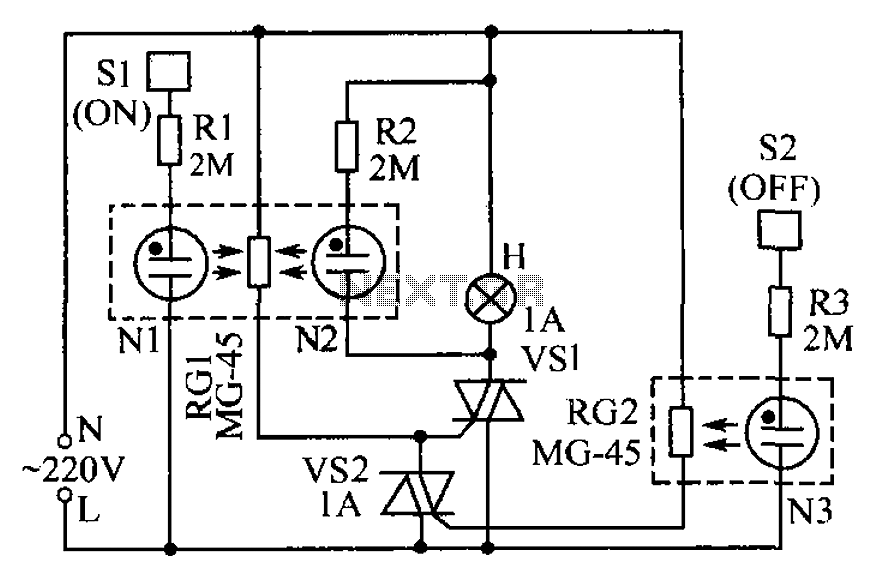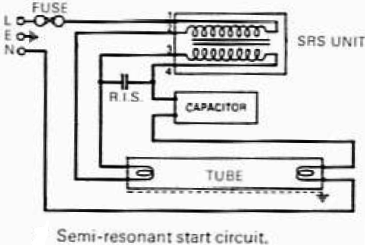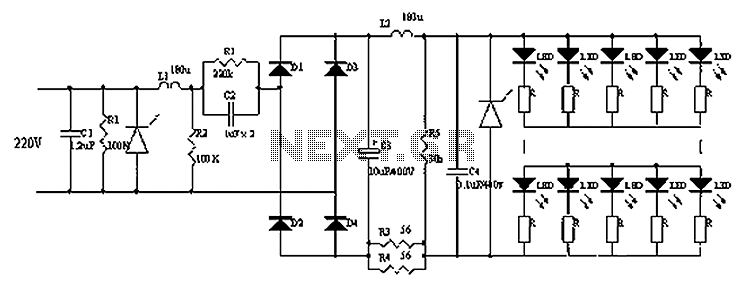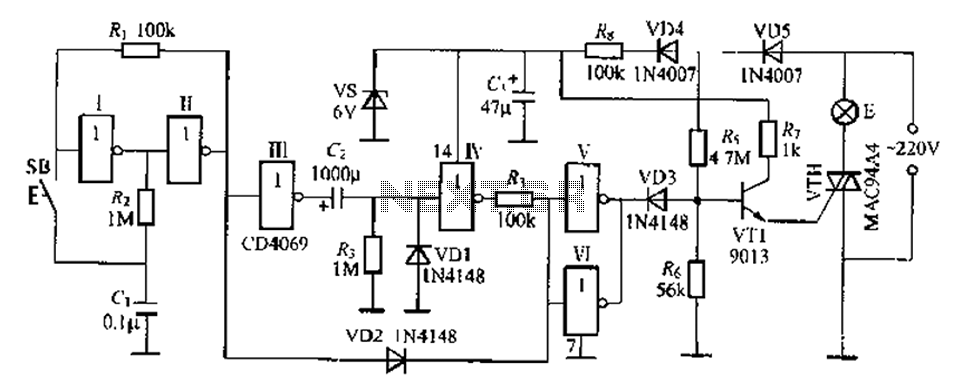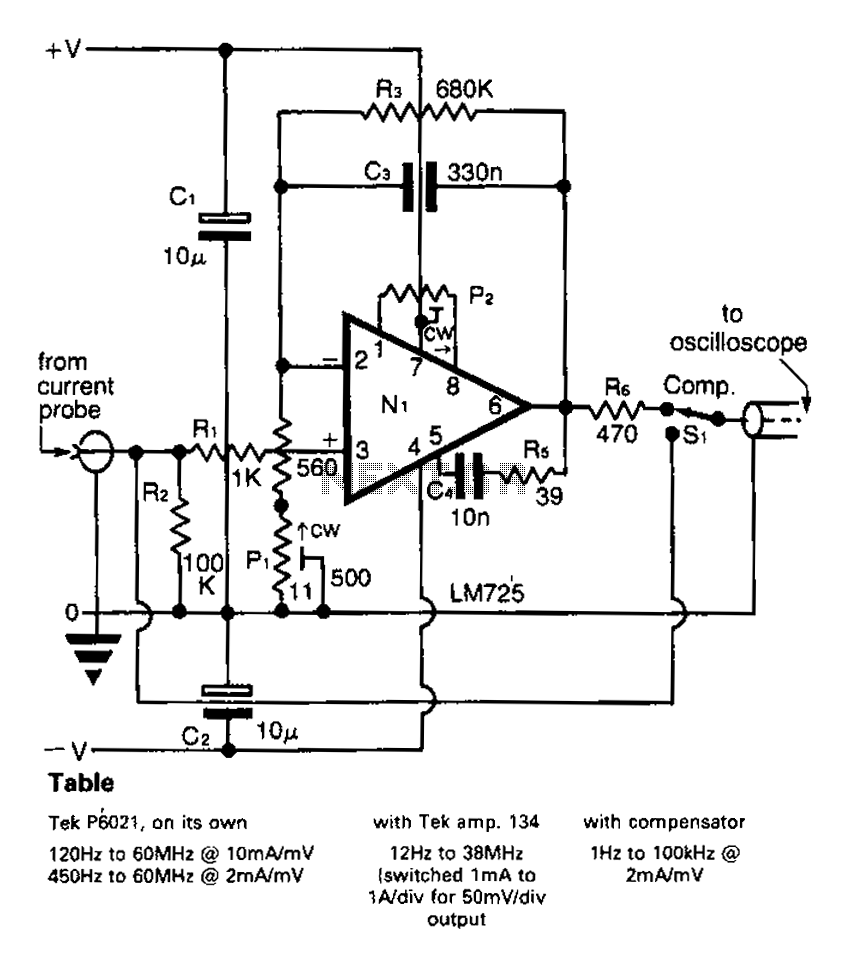
Two-wire Lamp Flasher

Ideal to operate 3 to 24V DC existing on-circuit lamps. LED operation is also possible. This circuit was designed to provide that continuous light lamps already wired into a circuit become flashing. Simply insert the circuit between existing lamp and negative supply. Especially suited for car or panel pilot lights, this device can drive lamps up to 10W. More: * Break lamp(s) to negative supply connection(s), then insert the circuit between existing lamp(s) connection(s) and negative supply (respecting polarities!). * C1 value can be varied from 100 to 1000µF or higher, in order to change flashing frequency.
This circuit functions as a flashing light controller for existing DC lamps operating within a voltage range of 3 to 24V. It is particularly advantageous for applications involving automotive lighting or panel indicators, where the desire is to convert a steady light into a flashing one. The circuit is designed to be inserted between the lamp and the negative supply line, effectively interrupting the current path to create the desired flashing effect.
The primary component responsible for the flashing action is a capacitor, designated as C1. The capacitance value of C1 can be adjusted from 100µF to 1000µF or even higher, allowing for customization of the flashing frequency. A larger capacitance will result in a slower flashing rate, while a smaller capacitance will produce a faster flashing rate. This flexibility enables the circuit to be tailored to specific user requirements or preferences.
In practical implementation, the circuit requires careful attention to the polarity of connections. It is crucial to respect the correct orientation when connecting the circuit to ensure proper operation and to prevent damage to the components involved. The circuit can drive lamps with a maximum power rating of up to 10W, making it suitable for a variety of lighting applications.
Overall, this flashing lamp circuit represents a simple yet effective solution for enhancing the functionality of existing lighting systems, transforming standard lamps into attention-grabbing indicators.Ideal to operate 3 to 24V DC existing on-circuit lamps LED operation is also possible. This circuit was designed to provide that continuous light lamps already wired into a circuit, become flashing. Simply insert the circuit between existing lamp and negative supply. Especially suited for car or panel pilot lights, this device can drive lamps up to 10W. * Break lamp(s) to negative supply connection(s), then insert the circuit between existing lamp(s) connection(s) and negative supply (respecting polarities!). * C1 value can be varied from 100 to 1000µF or higher, in order to change flashing frequ 🔗 External reference
This circuit functions as a flashing light controller for existing DC lamps operating within a voltage range of 3 to 24V. It is particularly advantageous for applications involving automotive lighting or panel indicators, where the desire is to convert a steady light into a flashing one. The circuit is designed to be inserted between the lamp and the negative supply line, effectively interrupting the current path to create the desired flashing effect.
The primary component responsible for the flashing action is a capacitor, designated as C1. The capacitance value of C1 can be adjusted from 100µF to 1000µF or even higher, allowing for customization of the flashing frequency. A larger capacitance will result in a slower flashing rate, while a smaller capacitance will produce a faster flashing rate. This flexibility enables the circuit to be tailored to specific user requirements or preferences.
In practical implementation, the circuit requires careful attention to the polarity of connections. It is crucial to respect the correct orientation when connecting the circuit to ensure proper operation and to prevent damage to the components involved. The circuit can drive lamps with a maximum power rating of up to 10W, making it suitable for a variety of lighting applications.
Overall, this flashing lamp circuit represents a simple yet effective solution for enhancing the functionality of existing lighting systems, transforming standard lamps into attention-grabbing indicators.Ideal to operate 3 to 24V DC existing on-circuit lamps LED operation is also possible. This circuit was designed to provide that continuous light lamps already wired into a circuit, become flashing. Simply insert the circuit between existing lamp and negative supply. Especially suited for car or panel pilot lights, this device can drive lamps up to 10W. * Break lamp(s) to negative supply connection(s), then insert the circuit between existing lamp(s) connection(s) and negative supply (respecting polarities!). * C1 value can be varied from 100 to 1000µF or higher, in order to change flashing frequ 🔗 External reference
